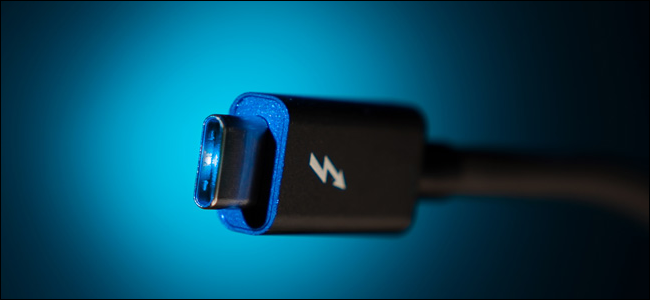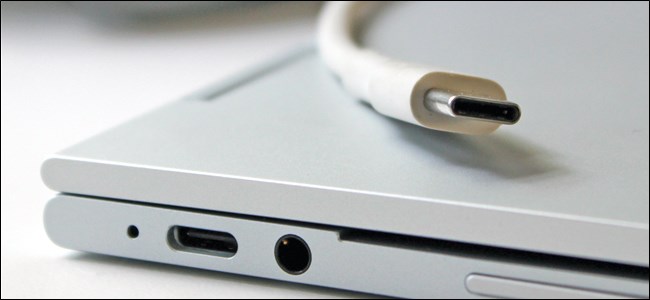
The output of the next excellent (but possibly confusing) version of USB is approaching. In September 2019, the USB implementation forum, USB-IF, published specifications for USB4, opening up the possibility of organizing incredibly fast USB connections over Thunderbolt 3 speeds.
Specification is ready
Comparison with Thunderbolt is not accidental. Intel has transferred the Thunderbolt protocol specification to the USB promotion group (this is an industry-specific organization that develops USB specifications; USB-IF promotes and implements technology)
When USB4 ports begin to appear in laptops and other places, they promise us speeds of up to 40 Gb / s. This is twice the maximum current USB 3.2 Gen 2 × 2 speed. Like other USB versions, USB4 will be backward compatible up to USB 2.0, and in some cases, USB4 ports will even work with peripherals for Thunderbolt 3.
Unfortunately, support for Thunderbolt 3 is optional, and some devices with USB4 may exit without it.
The update seems to be good, but if you can say something specific about the USB developers, it is that they know exactly how to confuse everyone. And USB4 is no exception. Let's get it right.
Several speeds
USB4 will not become a single standard from which you can expect the same work on all devices. Instead, it will have two speeds - in addition to the potentially maximum 40 Gb / s, there will also be a speed of 20 Gb / s. As if this is not enough, the specification also has a third option, at 10 Gb / s. However, USB-IF reported that this speed is needed only for backward compatibility. In other words, devices with USB4, limited to such a low speed, should not be.
It is not yet clear what the two main USB4 speeds will be called when they appear in stores. In the USB4 specification, 40 Gb / s is called Gen 3 × 2, and 20 Gb / s is called Gen 2 × 2. These are technical terms for manufacturers, not price tags at the nearest store.
USB-IF says branding recommendations will be published in early 2020. They will "emphasize the clear definition of the level of performance for the end user", according to the representative of the organization.
This is good news, because now, with USB 3.2, everything is a bit confusing - it has options for Gen 1, Gen 2 and Gen 2 × 2.
backward compatibility
Like other USB versions, this one will be backward compatible with its predecessors. In particular, with USB 2.0 and higher. This means that if you have an external backup hard drive with a USB 2.0 connector, you can connect it to the USB4 port. To make it work, you will need an adapter from USB Type-A (standard USB) to USB Type-C, and the hard drive will be limited to USB 2.0 speeds.
Also, the USB Type-C cables you already have are probably not suitable for USB4. They will support the old speeds, but if you want to see an increase in the data transfer speed, you will have to buy new cables and new equipment.
Backward compatible with Thunderbolt 3

USB-IF says USB4 may be backward compatible with Intel's Thunderbolt 3, which also uses Type-C connectors. This is reasonable, since the Thunderbolt 3 specifications are also included in the USB4 specification. But support for Thunderbolt 3 will not be mandatory for USB4. Although Intel provided USB-IF with the ability to freely use the Thunderbolt 3 specifications, it did not provide the freedom to use the Thunderbolt 3 name.
Any manufacturer who wants to advertise their USB4 port as backward compatible with Thunderbolt 3 must obtain certification from Intel. Therefore, this data transfer technology from Intel is not so common.
From a practical point of view, we do not think that the current situation with Thunderbolt 3 on the PC will somehow change. For example, don't expect official Thunderbolt 3 support on AMD machines - as it was before USB4.
Several Intel-based motherboards with USB4 ports with official Thunderbolt 3 support are likely to be released, but for the most part PC makers will rely on expansion cards to support Thunderbolt 3 devices.
With laptops, things will be a little different. Thunderbolt 3 is not so popular, but on laptops it is more common than on desktop computers. For example, laptops with Thunderbolt 3 support are often used with external graphics cards.
And when it comes time to replace the old laptop with a new one with USB4 support, it will be very important to make sure that it supports your old equipment with Thunderbolt 3. If this is not the case, you will either have to drop the peripherals or look for a laptop that supports the old standard via USB4.
Dynamic bandwidth sharing
One of the best features of USB4 is that the standard will take into account the speed that shared devices require. The most common example of this is when you have both an external drive and a monitor connected.
USB4 will be smart enough to support a high frame rate on the display, and give the external drive everything it needs to transfer data.
Ubiquitous USB Power Delivery

All USB4 devices will support the USB Power Delivery (USB PD) standard, which can transfer up to 100 watts of power via a USB port. The idea is to allow phones to charge from a USB port on a laptop a little faster than an hour per teaspoon.
The USB PD uses smart charging to make sure that the device you are charging receives as much power as the charger can supply. The two devices will agree on the charging power so that it is not too powerful or weak, depending on the needs of the devices.
One type port
USB4 should revolutionize ports, and make USB more versatile for everyday needs. Now we have a whole bag of standard USB Type-A ports with speeds ranging from "somewhere in my life I turned the wrong way" to "well, that wasn’t so bad." And there is also microUSB, which is mainly used to charge phones, and new Type-C ports, which have more speeds than a mountain bike.
All this suggests that in the world of USB there is a mess of different cables and specifications. Since USB4 stopped on Type-C connectors, we may finally see a single port type suitable for a device of any size, and a single cable connector for everything.
You should not expect this universalization revolution to happen very soon, as laptop manufacturers are likely to continue to make Type-A ports on their devices to provide backward compatibility for home and industrial users without the need for additional dongles.
In addition, even if Type-C eventually becomes universal, different USB options will still have a bunch of different speed modes.
Sounds great, but when will it appear?
It is not yet known when USB4 will begin to appear. Typically, manufacturers are ready to accept new USB technologies faster than other standards - such as with the lagging implementation of SD and microSD Express. Probably, we should expect an active appearance of USB4 by the middle or end of 2020, or even by 2021.